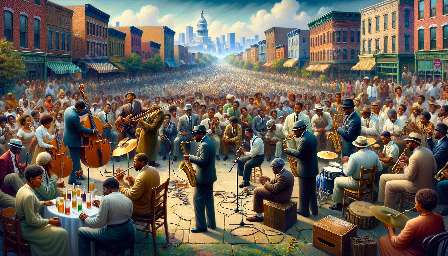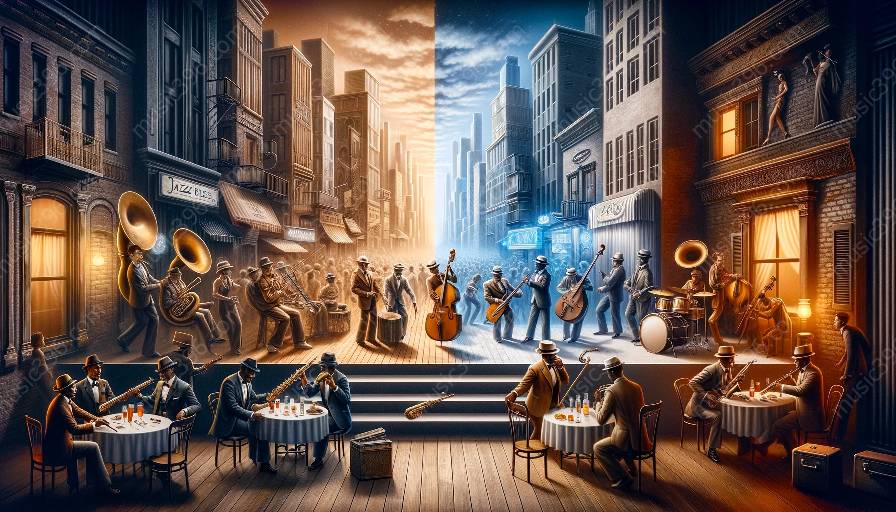Jazz music has a rich and complex history that has evolved through various styles and subgenres over the years. From its roots in African American culture to its influence on blues and contemporary music, jazz has continually developed and diversified, creating a vibrant tapestry of musical expression. In this topic cluster, we will delve into the evolution of jazz, its connections to jazz history, and its impact on blues and other genres.
The Origins of Jazz
Jazz music originated in the late 19th and early 20th centuries in the African American communities of New Orleans, Louisiana. It is deeply rooted in the cultural traditions and musical practices of African slaves and their descendants in the United States. Jazz emerged as a fusion of African rhythms, spirituals, work songs, and European harmonies and instruments. The early jazz pioneers, such as Buddy Bolden, Jelly Roll Morton, and Louis Armstrong, played a significant role in shaping the foundational elements of jazz music.
The Birth of Jazz Styles and Subgenres
As jazz music spread across the United States and beyond, it began to diversify into distinct styles and subgenres. One of the earliest styles to emerge was Dixieland jazz, characterized by its lively, upbeat tempo and collective improvisation. Other styles, such as swing, bebop, and cool jazz, followed, each bringing its own unique characteristics and innovations to the genre.
During the mid-20th century, jazz continued to evolve, giving rise to subgenres like modal jazz, free jazz, and jazz fusion. Modal jazz, popularized by musicians like Miles Davis and John Coltrane, emphasized improvisation over traditional chord progressions, while free jazz pushed the boundaries of musical experimentation and expression. Jazz fusion combined elements of jazz with rock, funk, and other genres, expanding the sonic possibilities of jazz music.
Jazz History and Its Impact
Jazz history reflects the social, cultural, and political dynamics of the times in which it developed. From the Harlem Renaissance of the 1920s to the civil rights movement of the 1960s, jazz music has been intertwined with the pursuit of freedom, equality, and artistic innovation. The contributions of influential jazz musicians, such as Duke Ellington, Count Basie, and Billie Holiday, have left an indelible mark on the genre and on American music as a whole.
Jazz and Blues
Blues music, with its roots in the African American experience, shares a close relationship with jazz. Both genres draw from similar musical traditions and have influenced each other's development over time. Jazz blues, a subgenre that blends elements of jazz and blues, exemplifies the convergence of these two musical styles, incorporating soulful melodies and improvisation within a jazz framework.
Contemporary Influence
The evolution of jazz styles and subgenres continues to have a significant impact on contemporary music. Jazz fusion has influenced the development of genres like funk, smooth jazz, and electronic music, while the legacies of bebop and cool jazz can be heard in modern jazz compositions and performances. Jazz's enduring influence on popular music and its ongoing innovation make it a vital force in the global music landscape.
In conclusion, the evolution of jazz styles and subgenres reflects the ever-changing nature of artistic expression and cultural adaptation. From its origins in African American communities to its diverse manifestations in the modern era, jazz music embodies creativity, resilience, and the power of musical collaboration. Understanding the evolution of jazz is not only a journey through musical history but also an exploration of the human spirit and its capacity for innovation.






























